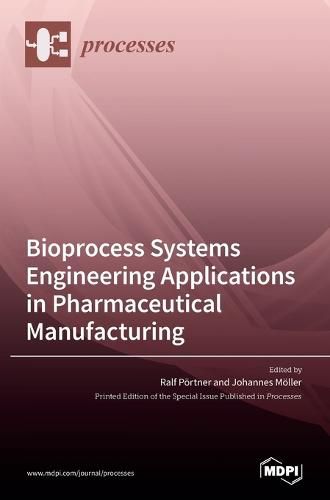Readings Newsletter
Become a Readings Member to make your shopping experience even easier.
Sign in or sign up for free!
You’re not far away from qualifying for FREE standard shipping within Australia
You’ve qualified for FREE standard shipping within Australia
The cart is loading…






This title is printed to order. This book may have been self-published. If so, we cannot guarantee the quality of the content. In the main most books will have gone through the editing process however some may not. We therefore suggest that you be aware of this before ordering this book. If in doubt check either the author or publisher’s details as we are unable to accept any returns unless they are faulty. Please contact us if you have any questions.
Biopharmaceutical and pharmaceutical manufacturing are strongly influenced by the process analytical technology initiative (PAT) and quality by design (QbD) methodologies, which are designed to enhance the understanding of more integrated processes. The major aim of this effort can be summarized as developing a mechanistic understanding of a wide range of process steps, including the development of technologies to perform online measurements and real-time control and optimization. Furthermore, minimization of the number of empirical experiments and the model-assisted exploration of the process design space are targeted. Even if tremendous progress has been achieved so far, there is still work to be carried out in order to realize the full potential of the process systems engineering toolbox. Within this reprint, an overview of cutting-edge developments of process systems engineering for biopharmaceutical and pharmaceutical manufacturing processes is given, including model-based process design, Digital Twins, computer-aided process understanding, process development and optimization, and monitoring and control of bioprocesses. The biopharmaceutical processes addressed focus on the manufacturing of biopharmaceuticals, mainly by Chinese hamster ovary (CHO) cells, as well as adeno-associated virus production and generation of cell spheroids for cell therapies.
$9.00 standard shipping within Australia
FREE standard shipping within Australia for orders over $100.00
Express & International shipping calculated at checkout
Stock availability can be subject to change without notice. We recommend calling the shop or contacting our online team to check availability of low stock items. Please see our Shopping Online page for more details.
This title is printed to order. This book may have been self-published. If so, we cannot guarantee the quality of the content. In the main most books will have gone through the editing process however some may not. We therefore suggest that you be aware of this before ordering this book. If in doubt check either the author or publisher’s details as we are unable to accept any returns unless they are faulty. Please contact us if you have any questions.
Biopharmaceutical and pharmaceutical manufacturing are strongly influenced by the process analytical technology initiative (PAT) and quality by design (QbD) methodologies, which are designed to enhance the understanding of more integrated processes. The major aim of this effort can be summarized as developing a mechanistic understanding of a wide range of process steps, including the development of technologies to perform online measurements and real-time control and optimization. Furthermore, minimization of the number of empirical experiments and the model-assisted exploration of the process design space are targeted. Even if tremendous progress has been achieved so far, there is still work to be carried out in order to realize the full potential of the process systems engineering toolbox. Within this reprint, an overview of cutting-edge developments of process systems engineering for biopharmaceutical and pharmaceutical manufacturing processes is given, including model-based process design, Digital Twins, computer-aided process understanding, process development and optimization, and monitoring and control of bioprocesses. The biopharmaceutical processes addressed focus on the manufacturing of biopharmaceuticals, mainly by Chinese hamster ovary (CHO) cells, as well as adeno-associated virus production and generation of cell spheroids for cell therapies.